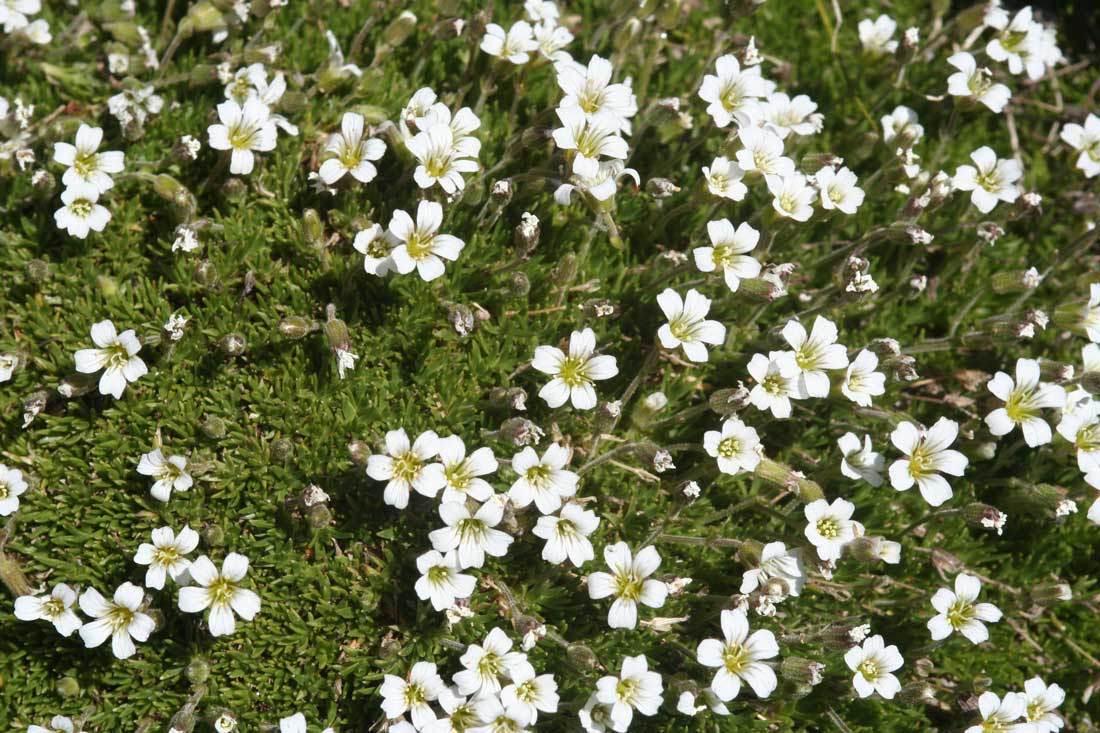Alpine Fell-field Cushion Plant Community
Summit Lake, Clear Creek County
Alpine Fell Field
Fell field – such an unusual name for such an unusual place. The most direct path to understanding them both is to know that in this case, the word fell is the one used by speakers of the Gaelic languages, think Ireland and Scotland. On those rocky islands fell meant stone, and the words fell field now refer to the stony fields present in the alpine, which in Colorado occupy the spaces from 11,500 to 14,439 feet, the summit of Mt. Elbert, the highest peak not only in Colorado but in all of the American Rockies. You see fell field spelled as one word, two words, and hyphenated; we use it here with the spelling found in the Flora of Colorado.
A brilliant mosaic of color lies scattered across the fell field for a brief moment in early spring, a seemingly random pattern of wildflowers and rock. But in fact each plant has a distinct reason to be exactly where it is, thousands of years of adaptations have enabled the native plants to make a home in the harsh conditions that exist in the fell field.
Wind is the first and biggest challenge, and the main reason plants here are forced to complete their life cycles hugging the ground. Strong and constant, the wind dries out the plants, carries away both the heat that would build near the ground, and also the fine particles of potential soil.
Soil, or lack of it, is the second challenge. Even a cursory glance reveals that the gravel on the surface of a fell field shows little alteration from the rock it has parted from, decomposition is just beginning. The shallow layer of particles fine enough to allow plants to grow contains almost no organic material, resulting in a soil that has been described as ‘impoverished.’ Lack of organic matter also causes an inability of the soil to retain water.
The third challenge is the extreme exposure to solar radiation. Less atmosphere at elevation equals more intensity from the ultraviolet light (UV) rays of the sun. Combine all these challenges with the cold temperatures and short growing season and it seems almost impossible that plants can grow here at all. Their remarkable adaptations are numerous and varied.
Some Indicator Plants
Click on photo to see full-page lightbox image.
In lightbox, click on X in upper right corner to return here.
Alpine Stitchwort (Cherleria obtusiloba)
Cushion plant is the common term for the dwarf-sized natives that have conquered the challenges of the fell field. These resilient plants stay low to the ground, avoiding wind, and develop thick, strong roots to penetrate small crevices in search of water. They protect themselves with trichomes – hair-like structures that shield from UV rays and help keep moisture inside. Many fell field plants have the ability to cutinize – another word for your botanical backpack. Cutinization is the process by which the cells of a plant’s ‘skin’ thicken and form cutin, which contains waxes, resins, and fatty acids, thereby forming a waterproof layer. Thus protected, the little domes of cushion plants have provided themselves a tiny microclimate, a buffer from wind and sun, and a way to conserve food and water supplies. Over time cushion plants can form large spreading mats.
A fell field once developed remains stable for hundreds of years, until, if conditions allow, the soil begins to develop. Soils on the plains are thought to require a hundred years to accumulate an inch. On the fell fields, this same accumulation takes many hundreds of years. As the soil matures it becomes deeper and contains a higher percentage of humus. Now it can retain more water and more erect plants can be sustained. First the cushion plants give a foothold to the graminoids, the grasses and sedges. The graminoids will continue to dominate here, but now taller wildflowers can move in. Eventually these taller plants will outcompete the cushion plants, which will die off, and as the soil continues to develop, dry turf, also called alpine turf, comes into existence.
Dry turf, of course, tends to form on more gentle slopes but is by no means delineated by strict boundaries. The land forms as well as the plant species can share long transition zones and are frequently intermixed. There is less visible rock in the dry turf, though, and the peak time of blooming is closer the midsummer for most of its plants. The dry turf will be home to a greater number of birds and animals. Both the fell field and the dry turf host a wide array of lichens and mosses.
– Sue Dingwell

